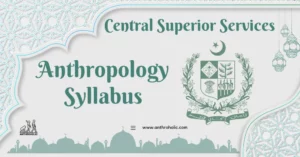AI Answer Evaluation Platform Live Now. Try Free Answer Evaluation Now
Sacred and Profane
The terms “sacred” and “profane” serve as pillars for understanding various religious phenomena. Originating from the Latin words ‘sacer’ (holy) and ‘profanum’ (outside the temple), these concepts have been central to anthropological, sociological, and religious studies. These distinctions help delineate the borders between the transcendental and the ordinary, between the divine and the mundane [1].

Understanding the Sacred
Definition and Characteristics
The “sacred” represents aspects that are extraordinary, transcendent, and connected to the divine or supernatural [2]. This comprises:
- Gods, deities, and spiritual beings
- Rituals, prayers, and religious ceremonies
- Sacred scriptures and religious artifacts
- Sacred places, such as temples, churches, and sacred natural sites
The sacred, inherently potent and separate from the everyday world, necessitates special behavior, such as reverence, respect, or fear [3].
The Role of Sacred in Society
The concept of the sacred plays a fundamental role in societal organization. It offers a basis for moral frameworks, instilling unity and cohesion within social groups. The sacred can:
- Create a sense of belonging and identity
- Provide ethical guidelines and behavioral norms
- Offer comfort and hope during difficult times
The Concept of the Sacred in Different Religions
Different religions perceive the sacred uniquely, reflecting their spiritual, cultural, and historical contexts:
| Religion | Concept of Sacred |
|---|---|
| Christianity | The figure of Christ, the Holy Bible, the cross, and churches. |
| Islam | Allah, the Quran, the Kaaba, and the Prophet Muhammad. |
| Hinduism | Deities, the Vedas, temples, and the river Ganges. |
| Buddhism | The Buddha, the Dharma, stupas, and Bodhi tree. |
Understanding the Profane
Definition and Characteristics
The “profane” represents the ordinary, mundane, or secular aspects of life [4]. This includes:
- Daily routines and activities
- Non-religious social gatherings
- Secular literature and arts
- Ordinary places, like houses, markets, and schools
The profane does not carry religious or spiritual significance and is free from religious restrictions or taboos [5].
The Role of Profane in Society
Despite its mundanity, the profane serves crucial societal functions. It forms the foundation of ordinary human interaction, and supports the continuation of daily life. The profane can:
- Facilitate economic and social activities
- Encourage artistic and scientific creativity
- Promote critical thinking and freedom of expression
Interplay between the Sacred and the Profane
The dichotomy between the sacred and profane is not absolute; they constantly interact, shaping each other in myriad ways.
Influence of Sacred on Profane
The sacred often lends meaning to profane activities, such as:
- Sacred holidays influencing mundane routines
- Sacred texts shaping societal laws and ethics
- Sacred rituals marking life transitions like birth, marriage, and death
Influence of Profane on Sacred
Conversely, profane aspects can impact the sacred, such as:
- Societal changes leading to alterations in religious practices
- Technological advancements influencing the dissemination of sacred texts
- Cultural influences altering the interpretation of sacred symbols
Critiques and Further Studies
Several scholars have critiqued the binary nature of the sacred-profane dichotomy, arguing that it oversimplifies complex religious phenomena [6]. Other studies suggest a spectrum where the sacred and profane exist as degrees rather than absolutes.
Modern Interpretations of Sacred and Profane
Evolution of the Concepts
As societies evolve, the understanding of sacred and profane also transforms. For instance, with the advent of secularism, the concept of sacred has extended beyond religion, encompassing ideas of human rights, justice, and freedom [7]. Similarly, profanity, once associated with mundane and ordinary, now often denotes disrespect towards the sacred.
The Sacred and Profane in Art and Literature
Modern art and literature often blur the boundaries between the sacred and the profane. Many artists and writers juxtapose these elements to critique religious institutions, explore human spirituality, or express existential concerns [8].
The Sacred and Profane in Popular Culture
Pop culture frequently integrates sacred symbols and narratives, reinterpreting them in a profane context. This often leads to debates around religious sensitivity and freedom of expression [9].
Case Study: The Sacred and Profane in Music
Religious Music
In most traditions, music plays an essential role in expressing and experiencing the sacred. It sets the mood for worship, facilitates spiritual connection, and serves as a medium for religious teachings [10].
Secular Music
On the other hand, secular music, often seen as profane, explores worldly themes like love, friendship, and societal issues. It promotes creativity, fosters cultural expression, and provides entertainment [11].
Interplay in Music
Music often bridges the gap between the sacred and the profane. Many spiritual themes find their way into secular music, while modern interpretations of traditional religious music engage younger audiences and adapt to contemporary tastes.
Sacred and Profane in Cyberspace
With the increasing digitalization of society, the sacred and the profane are taking on new forms and spaces online.
Digital Religion
Religious practices are adapting to cyberspace. Online sermons, virtual rituals, and digital pilgrimage provide access to the sacred beyond physical boundaries, fostering global religious communities [12].
Cyber Profanity
The internet also harbors profane elements, such as trolling, cyberbullying, and hate speech. It challenges traditional definitions of profanity, often demanding new ethical guidelines and regulatory measures [13].
Conclusion
The sacred and the profane are integral to understanding human societies. They inform religious practices, societal norms, and even individual identities. Acknowledging their complexities and interplay can shed light on the multifaceted nature of human cultures and religions.
References
[1] Durkheim, E. (1912). The Elementary Forms of the Religious Life.
[2] Eliade, M. (1957). The Sacred and the Profane: The Nature of Religion.
[3] Otto, R. (1923). The Idea of the Holy.
[4] Berger, P. L. (1967). The Sacred Canopy: Elements of a Sociological Theory of Religion.
[5] Freud, S. (1927). The Future of an Illusion.
[6] Bell, C. (1992). Ritual Theory, Ritual Practice.
[7] Taylor, C. (2007). A Secular Age.
[8] Gilmour, M. (2010). Gods and Guitars: Seeking the Sacred in Post-1960s Popular Music.
[9] Moseley, R. (2015). Popular Culture, Religion, and the Anthropocene.
[10] Begbie, J. S. (2000). Theology, Music and Time.
[11] Frith, S. (2001). Pop Music.
[12] Campbell, H. (2012). Digital Religion: Understanding Religious Practice in New Media Worlds.
[13] Gunkel, D. J. (2007). Thinking Otherwise: Philosophy, Communication, Technology.



